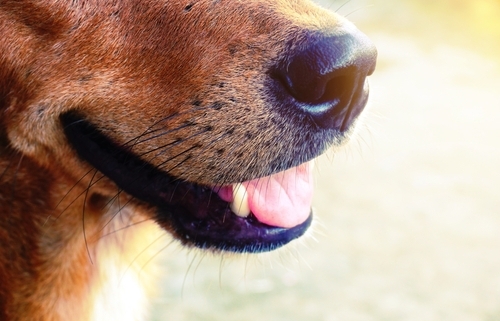Dogs & Whiskers
Cats aren’t the only pets that have whiskers! Our four-legged friendly dogs have them as well. It is important to know that each whisker plays a crucial role in a dog’s sensory perception. Dogs can also communicate their emotions through their whiskers. So, they are extremely important!
Dog whiskers, also known as vibrissae, are specialized hairs that grow above a dog’s eyes and on their cheeks, muzzle, and chin. They have a tapered tip and are much thicker and more flexible than regular dog hair. The length of facial whiskers generally relates to the size of the dog, with head width in mind. The color of whiskers are usually influenced by coat colors, although this may change with age or certain skin infections. Keep in mind that all dogs have whiskers, even traditionally hairless breeds!
The interesting thing about whiskers is that they contain clusters of tactile receptor cells that are essential for sending signals to the brain. If a whisker is touched by another object, or air currents move a whisker, that vibration transmits nerve impulses to the brain. Whiskers have a way of detecting shapes, speeds, and sizes of nearby objects based on movements of air currents.
As we mentioned earlier, dog whiskers can also communicate emotions such as happiness or anxiety when a dog is in a stressful situation. Relaxed dogs often have their whiskers resting flat against their face. Happy dogs will elevate their whiskers. Dogs who are scared or anxious will often flare or twitch the muzzle whiskers out and downward, toward the threat.
You should never trim a dog’s whiskers. Once again, they are vital for normal sensory perception and balance! By shortening (or cutting off) your dog’s whiskers, it may throw off their balance, movement, and ability to sense environmental cues. Whiskers eventually fall out just like the hair on the dog’s body. It can take several weeks for new whiskers to grow. Hopefully you have a better understanding of the importance of dog whiskers. It is obvious that they play an important role in the health of our furry friends!



